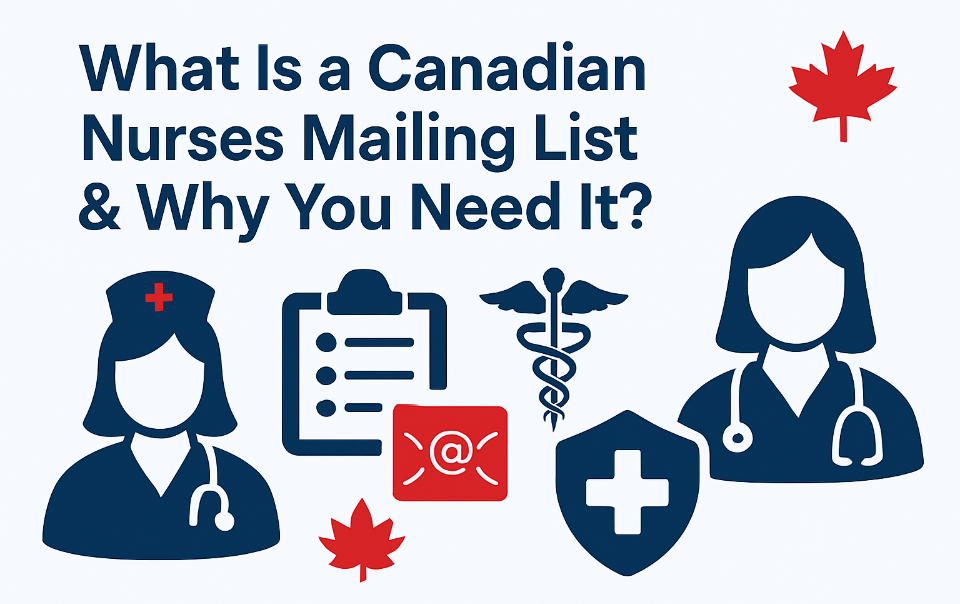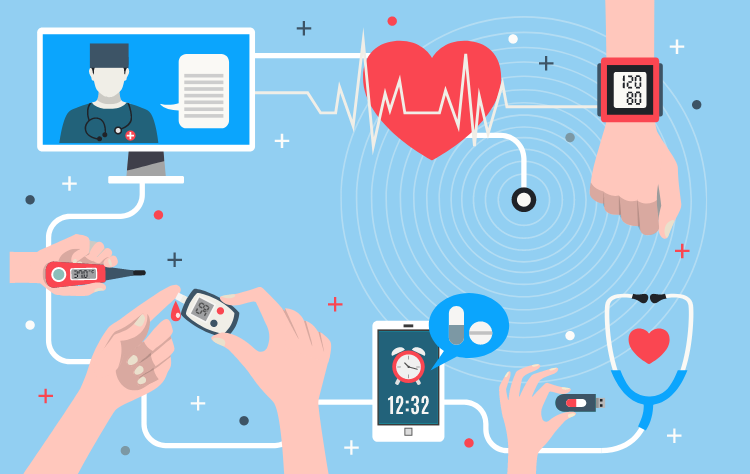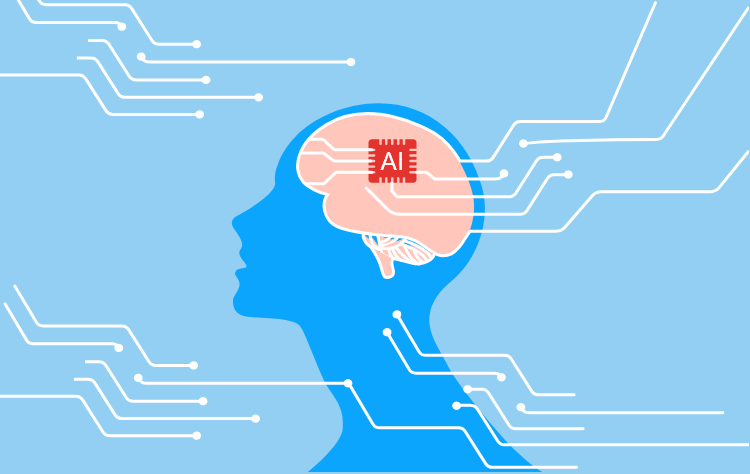

The approach towards mental healthcare has undergone a paradigmatic shift in the last couple of years. The practice of secluding the mentally ill and treating them with inhumane treatment like lobotomies is a thing of the past. Now we see greater exploration, understanding, and embracement of the intricacies of mental healthcare.
Mental healthcare is a topic with increased awareness as more and more celebrities talk openly about mental health today. Suicides are receiving more coverage; mental health is becoming more of a global conversation.
However, this shift can also be attributed to the changes in the treatment procedures. With the help of technology, mental health support and treatment have been opened up to new avenues. Electronic devices such as cell phones, smartphones, and tablets are providing doctors and R&D personnel with new methods of accessing and monitoring mental health progress.
Mental illness can be mild and have moderate effects too, though it’s been argued that the severity is not necessarily significant.
We can classify mental illness as: Any Mental Illness (AMI) & Serious Mental Illness (SMI)
AMI can vary in impact, and people with more severe mental illnesses may experience varying degrees of impairment.
Serious mental illness causes substantial mental, behavioral, or emotional impairment to the daily functioning of the person. It brings the life activities of the patient to a standstill.
Some of the most common SMIs are bipolar disorder, major depressive disorder, schizophrenia, and schizoaffective disorder.
In this blog, we are looking into some new technological advancements, treatments, and techniques that have drastically changed the mental healthcare field.
Smart devices like digital watches and phones have become so integrated into human life that if the data is tapped correctly, it can lead to significant revelation in the users’ mental health. With smartphones, one can track the type of content being consumed, entries being made in a digital journal or even the type of searches being typed in the search engine. Proper data management can trigger warnings to deliver help to mental patients at the right time.

Smartphones are generating these pictures with technology that can show the progress of someone’s mental health between visits. They can create an easier & more convenient way for patients to keep up their mental health despite busy schedules.
Self-reporting can be a good way to furnish accurate information about mental health, and some people refuse to give this information without consent. It’s not 100% reliable, but it is a lot more than dependent on self-reporting.
However, in the realm of mental health care and information gathering, these devices are still an untapped market. The scope for smart devices in monitoring mental health has still a long way to go.
Remote monitoring helps the MSP (Managed Service Provider) to proactively monitor their client’s endpoints and networks. It is a great way to not only increase assistance but also save time.
Health care professionals till now have been primarily using remote monitoring technology to monitor elderly patients who want to live independently. However, it’s time to acknowledge the impact of AI assistants in acting as a resource for mental health consulting. Remote monitoring is increasingly becoming a method of choice to provide support or advice to mentally ill patients.

Psychiatrists can use wearables to better understand their patients’ mental state by measuring their pulse, heart rate, blood pressure, and galvanic skin response. This technology can also be valuable for patients who are in crisis. A remote monitoring system might seem intrusive, but it is paving the way to provide an alternative to expensive inpatient care for patients who cannot afford treatment or are not willing to take it.
The application of telemedicine to psychiatry is known as telepsychiatry. It refers to the delivery of psychiatric assessment and cares through telecommunications technology. A large number of startups are now developing tools to make therapy available on phones. It is making mental health more accessible than ever before, as people now have more options.
With telepsychiatry, patients can speak to licensed mental health professionals in their state without ever leaving their homes.
The availability of mental healthcare has increased greatly following Covid and can be attributed to the growing popularity of telepsychiatry. Patients can book an appointment and receive a consultation through a telephonic call, an online call, or a video call.
Many times, people face several challenges when seeking mental healthcare in their geographical area of residence, including a lack of available professionals. Either local psychiatrists and therapists do not accept new patients, or they’re overbooked making it impossible to access mental health services.
The challenge with mental health is that a lot of specialists base their opinions on subjective patient analysis that can only be collected when the patient is physically present. The healthcare industry is quickly recognizing the value of artificial intelligence. In contrast, AI is focusing on the hard, quantifiable aspects of medical imagery analysis.

According to its programming, AI can detect a lesion on an MRI because it is out of the norm. Though AI adoption in mental health is in its infancy, it could prove to be the most important innovation of the 21st century. In the context of healthcare, AI refers to the applications of machine learning (ML) algorithms and other cognitive technologies.
Medical providers and doctors can use AI to deliver more accurate diagnoses and treatment plans by using patient data and other information. AI can also improve preventive care recommendations for patients by analyzing large amounts of data.
There are acoustic cues that can reveal mental illnesses, detected by artificial intelligence. While this might not be an easy process, it is possible and worth looking into.
An interesting case study!
Vanderbilt University Medical Center in Nashville, Tenn., created a program wherein it collected data from more than 5,000 patients admitted for self-harm or suicide attempts. It used the information to tell whether the patient would attempt suicide again within the next year. It showed an 84% accuracy rate and 80% accuracy rate for the next two years. – (Source)
Transcranial magnetic stimulation, or TMS, uses magnetic devices to change the brain’s electromagnetic environment. Now, mental health professionals have started to rely on magnets for treatments for resistant depression. This is because it has proven more effective and doesn’t carry the same risks associated with ECT.
TMS uses a large electromagnet that targets the areas of the brain that control mood, reducing the symptoms of depression without medication or other invasive treatments.
Speech analysis is enabling a more personalized approach to diagnosing mental illness. It allows doctors, nurses, and other medical professionals to gain an accurate understanding of the patient’s condition and symptom coverage, as well as their care plan and prognosis.
A case study!
Professor, Eleni Stroulia, and her student, Mashrura Tasnim, submitted a paper to the Canadian Conference on Artificial Intelligence that detailed the potential applications for Speech Analysis Technology. They studied speech patterns and unconscious verbal cues which detected PTSD in veterans. This seems a significant milestone to warn the emergence of psychosis and even help diagnose bipolar disorder, anxiety, and depression. – (Source)
Mental health treatments have been changing in the last few years. Along with new research, people are gaining new insight into how their brain works and the effects of mental wellness on overall health. It is expected that with further advancements in this field, mental health will cease to be taboo and become as treatable as any other physical ailment.
This blog is published by ProDataLabs, a premium B2B e-commerce database provider. It has 5M+ verified contacts and company information of professionals and organizations from 170+ countries and 70+ industry sectors. These contacts have been used by 150+ businesses to date to ace their online marketing campaigns, and boost sales in return.